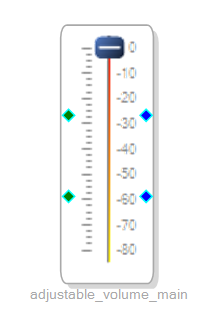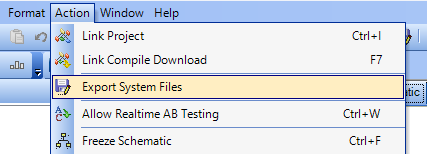This software package is a Python application, which controls Analog Devices digital signal processors (DSPs). It exposes a TCP server for connecting with SigmaStudio, allowing to upload new applications to the DSP, as well as debugging it. Essentially, it behaves like a wired debug probe, but with an Ethernet connection. This source code was inspired by the original TCP service, as well as the hifiberry-dsp project. However, this application was written completely from scratch, in an effort to make it more efficient, stable, and faster.
This software package contains two separate components: a backend service, as well as a frontend interface. It is meant to run on single-board computers that connect to an Analog Devices DSP via SPI or I2C.
The application specifically targets the Raspberry Pi hardware, but may run on other devices.
The backend service is the core application, which
- connects to the DSP via SPI or I2C,
- exposes a TCP interface towards SigmaStudio (on the default port
8087), - and provides a remote procedure call (RPC) interface, based on grpc.
With the latter, a frontend can connect to the backend service and control it remotely.
The frontend interface connects to the RPC service of the backend, allowing the user to control settings via a command-line interface (CLI). Currently, the frontend supports
- Resetting the DSP (soft or hard)
- Read arbitrary registers
- Change or set volume on a DSP volume register
- Read SigmaStudio parameter files and parse them in the backend
This is not an extensive list, but only comprises chips that are tested or likely compatible.
| DSP | Status | Backend settings dsp_type |
|---|---|---|
| ADAU140x | Untested, but register compatible with ADAU170x | adau1x0x |
| ADAU170x | Tested | adau1x0x |
| ADAU145X | Tested | adau14xx |
| ADAU146X | Tested | adau14xx |
The last column denotes the string to put in the backend settings file (see Configuration) for the dsp_type setting.
⚡ Running the installation can overwrite your existing configuration. For upgrading, see Upgrading!
These instructions are given for Raspberry Pi hardware (tested on Pi 4 and 5), running on Raspbperry Pi OS 12 (bookworm).
First, enable I2C and/or SPI peripherals by running
sudo raspi-config nonint do_spi 1
sudo raspi-config nonint do_ic2 1
For installing sigmadsp, please install git first, then clone this repository and run the installation script.
sudo apt install git &&
git clone https://github.com/elagil/sigmadsp.git &&
cd sigmadsp &&
./install.shThe script installs the Python package, which includes the sigmadsp-backend (the backend) and sigmadsp (the frontend) executables.
It also sets up a system service, which runs sigmadsp-backend in the background.
pipx is used for installing the Python package in an isolated way, without having to use sudo pip install <package>.
For upgrading, use pipx to upgrade the Python package and restart the backend service afterwards:
pipx upgrade sigmadsp &&
sudo systemctl restart sigmadsp-backend.serviceFrom within the previously cloned repository folder sigmadsp run
./uninstall.shIf you find that this removal procedure leaves any files unremoved, please open an issue.
Configuration of sigmadsp is done via a *.yaml file, which is created during installation. Its default path is /var/lib/sigmadsp/config.yaml. The default configuration is shown below.
# This config.yaml file contains all settings that can be changed on the sigmadsp-backend.
# The IP address and port, on which the sigmadsp-backend listens for requests from SigmaStudio.
host:
# The default value "0.0.0.0" allows listening on any address.
ip: "0.0.0.0"
port: 8087
# Settings for the sigmadsp-backend.
backend:
# The port, on which the sigmadsp-backend is reachable.
port: 50051
parameters:
# The parameter file path, which contains DSP application parameters,
# such as cell names, addresses and other information. This parameter file is required
# for the backend, in order to be able to control DSP functionality at runtime, e.g. volume.
path: "/var/lib/sigmadsp/current.params"
dsp:
# The type of the DSP to control with the sigmadsp-backend service.
# Can be "adau14xx" or "adau1x0x".
type: "adau14xx"
# The protocol used to communicate.
# Can be "spi" or "i2c"
protocol: "spi"
bus_number: "0"
device_address: "0"
pins:
# The DSP's hardware reset pin.
reset:
number: 17
active_high: false
initial_state: true
mode: "output"
# The self-boot pin, enabling the DSP to load its application from external flash when set.
self_boot:
number: 22
active_high: true
initial_state: true
mode: "output"For a list of commands that can be emitted by the frontend, please type
$ sigmadsp --help
Usage: sigmadsp [OPTIONS] COMMAND [ARGS]...
Command-line tool for controlling the sigmadsp-backend.
Options:
--port INTEGER Set the port, on which the backend listens for requests.
[default: 50051]
--ip IPV4ADDRESS Set the IP address, on which the backend listens for
requests. [default: 127.0.0.1]
--help Show this message and exit.
Commands:
change-volume Changes the volume by a certain amount in dB.
load-parameters Load a parameter file.
read-register Reads a DSP register.
reset Resets the DSP.
set-volume Sets the volume to a certain value in dB.For more information on a command, use --help on that command, for example
$ sigmadsp read-register --help
Usage: sigmadsp read-register [OPTIONS] ADDRESS LENGTH
Reads a DSP register.
Options:
--help Show this message and exit.A key feature of this application is the ability to control the connected DSP at runtime. At this point, it is only possible
to adjust the volume of a volume cell by means of the change-volume and set-volume commands.
For this to work, the backend requires knowledge about the program that is loaded onto the DSP. The register addresses at which the volume cells are located, must be known, in order to adjust their values. Conveniently, SigmaStudio can export a so-called parameter file that holds this information.
There is a safety mechanism is the sigmadsp application that makes sure that the parameter file matches the software
that is running on the DSP. This is important, as changing the DSP software also changes register addresses. If the
sigmadsp application attempted to write to an incorrect register address, this can have unforseeable consequences.
Therefore, you must include a DC cell in your DSP program, which contains a random value, and is called safety_hash.
On startup, the sigmadsp-backend will try to read the safety_hash cell from the DSP and only allow write access,
if the content matches the value of the provided parameter file. This ensures that the parameter file and DSP application
are consistent.
This is an example of a safety hash cell.
For the change-volume and set-volume commands to work, there needs to be at least one adjustable volume slider in the
DSP program. Currently, only a single slider is supported for adjustment.
Add a volume slider, as seen below, to your program. Be sure to call it adjustable_volume_main.
In the future, multiple adjustable sliders will be supported. They will be addressed by means of a unique name.
The naming scheme for sliders will be adjustable_volume_<name>.
Finally, the parameter files of the DSP program can be exported and loaded into sigmadsp.
First, use the Export system files feature of SigmaStudio
Store the files in a location of your choice. Among the exported files, there is one file that has the ending *.param.
Transfer it to the Raspberry Pi that runs the sigmadsp application.
Next, run
$ sigmadsp load-parameters <parameter_file>.paramsIf the safety hash cell content did not match, the call will return
INFO:root:Safety check failed, parameters cannot be adjusted.If everything went well, the call instead returns
INFO:root:Loaded parameters, control is unlocked.In that case, you can now adjust volume settings, for example by setting a new value in dB
$ sigmadsp set-volume -10
INFO:root:Set volume of cell 'adjustable_volume_main' to -10.00 dB.or by adjusting the current value by a certain offset in dB with
$ sigmadsp change-volume -10
INFO:root:Set volume of cell 'adjustable_volume_main' to -20.00 dB.The change-volume command reads the current volume level, and changes it by the chosen amount.



